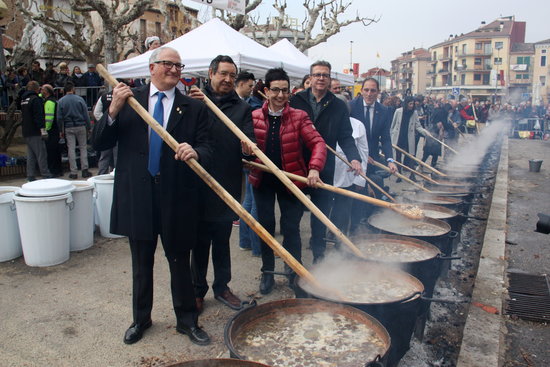One last Carnival blowout before ‘Burial of the Sardine’
Extermination Parade in Sitges, communal 'Ranxo' in several towns, and mock funeral rituals across Catalonia

After a week of partying and parades Catalonia's Carnival went out with a bang on Tuesday, with Sitges saving its biggest parade for the last day of celebrations, before Ash Wednesday (Dimecres de cendra) sees a strange funereal ritual that marks the beginning of Lent.
Sitges
The Carnival party capital Sitges made time on Tuesday for one last major blowout with more than 2,200 participants in 43 floats taking part in its Extermination Parade (rua de l’Extermini).
Pleasant temperatures helped bring large crowds out on the streets for a show filled with fantastic costumes, spectacular makeup, feathers, sequins and music.
It is estimated that around 300,000 people visited the town during Carnival, consolidating Sitges’ position as one of the top ten places worldwide for the festival.
Ranxo
Meanwhile in the small town of Ponts in central Catalonia the end of the carnival season was marked on Tuesday with a traditional communal meal called a ranxo.
Around 12,000 portions of winter stew were prepared for the townspeople and visitors who came for the celebration.
The tradition dates back to at least 1875 and its aim was to prepare for Lent with a “hot and strong dish”, explained Rosa Boix, the head chef at the Ponts ranxo. Other towns also held similar communal meals.
'Burial of the Sardine'
Ash Wednesday is the first day of Lent, traditionally a period of fasting, sobriety and abstinence leading up to Easter.
In many parts of Catalonia the day is marked with the strangely serious spectacle of a funeral procession for a sardine.
In coastal areas, the burial takes part on the beach, and involves communal sardine-cooking sessions known as sardinades.